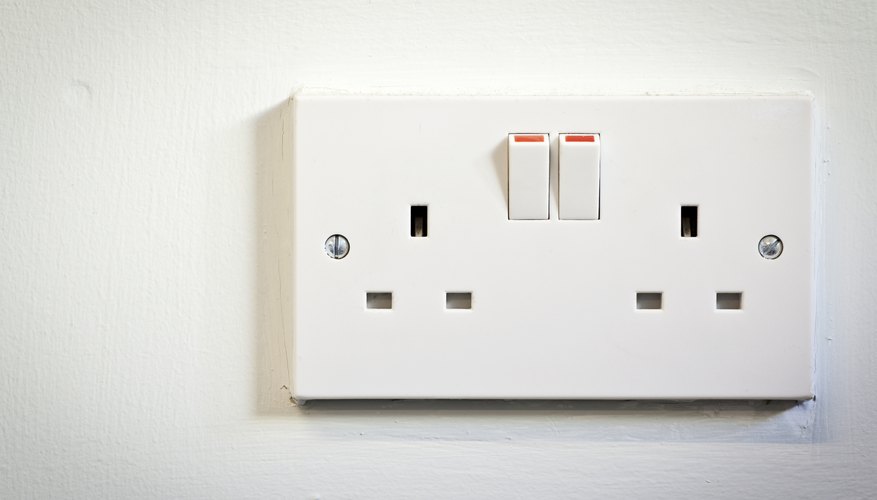How to Check 240 Voltage With a Multimeter
How to test an outlet with a digital multimeter

Testing an outlet with digital multimeter is a safe and accurate test if done correctly. This test is conducted while power to an outlet is on. It should not be done if the area is wet nor while touching grounded metal surfaces. You should kneel on a insulated mat and wear dry gloves when testing outdoor outlets. This procedure is otherwise intended for standard outlets tested in a clean, indoor, residential environment.
Make sure the meter leads are plugged in correctly and are clean and functional. The black lead should be plugged into the meter plug with a ground symbol near it. The red lead should be plugged into the meter marked volts/ohms or something similar. The red lead should not be plugged in to anything marked A or amps. If the leads need cleaning use a damp cloth, then dry them. To see if the leads are in good working order, set the meter to ohms or continuity and touch them together. You should read zero ohms.
- Testing an outlet with digital multimeter is a safe and accurate test if done correctly.
- The black lead should be plugged into the meter plug with a ground symbol near it.
Select the proper function on the meter by setting it to read Volts AC or vac. Some meters are "auto function." This means the meter has the ability to select the correct function automatically the instant it touches a circuit. If this is a feature your digital multimeter has, then simply turn it on.
Select the proper test range. This will be the lowest range setting that is larger than the amount of voltage you are testing for. Many digital meters are auto ranging and will select this for you when you take a measurement. Any meter that is auto function will also have this feature.
- Select the proper function on the meter by setting it to read Volts AC or vac.
- Many digital meters are auto ranging and will select this for you when you take a measurement.
For 240 volt outlets the neutral slot is on the left, hot is on the right and ground is the half circle opening centred below them. Insert either meter lead into the slot on the right until no metal shows on the lead. Insert the other lead into the slot on the left. The meter should have a reading of 220 to 250 vac. This tells you power is available at the outlet.
The digital multimeter can also check for reversed wires or a bad ground. Insert either lead into the ground opening until no metal is showing on the lead. Then insert the other lead into the slot on the right side. You should get a reading close to 240. If not, insert the second lead into the slot on the left. If there is around 240 volts read between ground and the neutral slot, then the hot and neutral wires are reversed on the outlet. If neither measurement reveals voltage, then the ground is disconnected.
- For 240 volt outlets the neutral slot is on the left, hot is on the right and ground is the half circle opening centred below them.
- If there is around 240 volts read between ground and the neutral slot, then the hot and neutral wires are reversed on the outlet.
Power should be available to the outlet only while testing. Before working on any electrical socket, turn off the breaker feeding it and verify power is off. Limit the access to the breaker panel so the breaker can not be turned on while you work on a outlet. During testing do not use damaged or dirty meter leads.
How to Check 240 Voltage With a Multimeter
Source: https://www.ehow.co.uk/how_5840711_test-electrical-outlet-digital-multimeter.html